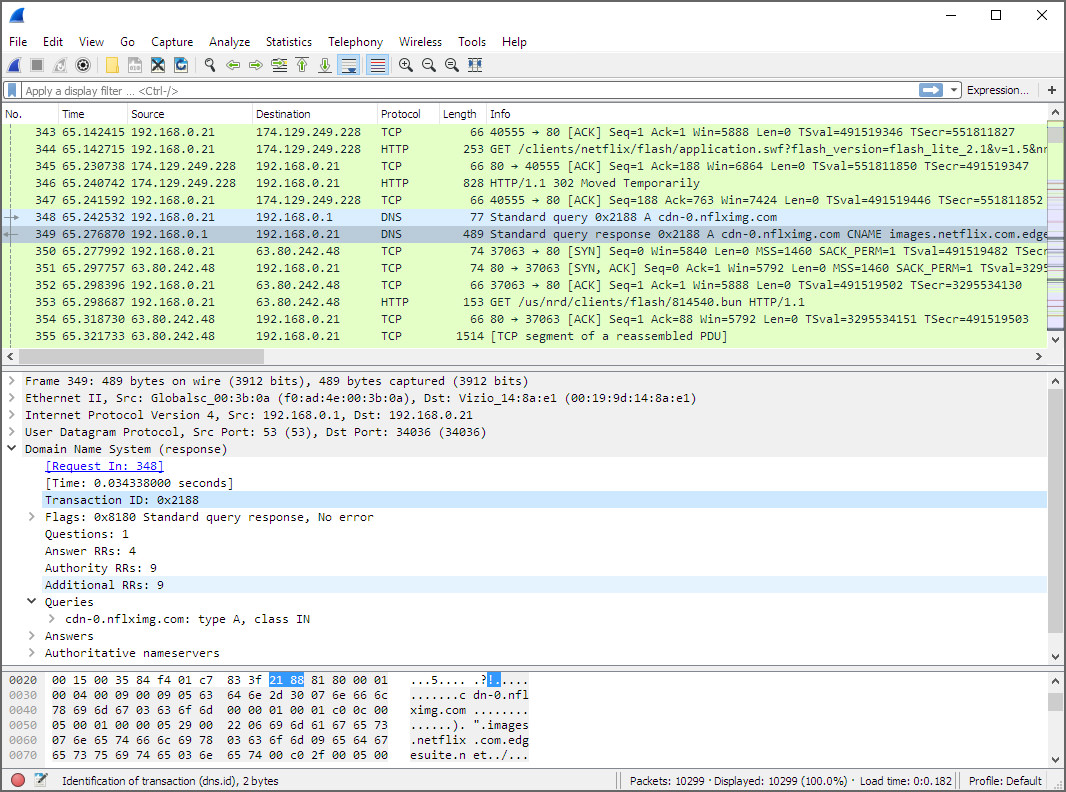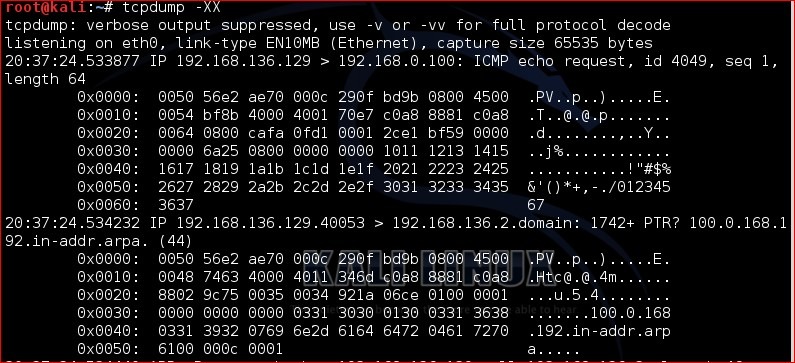
This is even more useful when we apply filters to capture specific packets (shown below).īy default, tcpdump resolves IP addresses and ports into names, as shown in the previous example.

This is useful in different scenarios-for instance, if you're troubleshooting connectivity and capturing a few initial packets is enough. In this case, tcpdump stopped capturing automatically after capturing five packets. In this case, since I am connected to this server using ssh, tcpdump captured all these packets. As you can see in this example, tcpdump captured more than 9,000 packets. You can interrupt capturing by pressing Ctrl+C. Tcpdump continues to capture packets until it receives an interrupt signal.
#TCPDUMP WIRESHARK FULL#
Tcpdump: verbose output suppressed, use -v or -vv for full protocol decode Check whether tcpdump is installed on your system with the following command: Tcpdump is included with several Linux distributions, so chances are, you already have it installed.

In this article, we'll look at some of tcpdump's most common features. It can also be launched in the background or as a scheduled job using tools like cron. Since it's a command line tool, it is ideal to run in remote servers or devices for which a GUI is not available, to collect data that can be analyzed later. It is often used to help troubleshoot network issues, as well as a security tool.Ī powerful and versatile tool that includes many options and filters, tcpdump can be used in a variety of cases. Tcpdump is a command line utility that allows you to capture and analyze network traffic going through your system. 10 command-line tools for data analysis in Linux.RFC 3489 STUN - Simple Traversal of User Datagram Protocol (UDP) Through Network Address Translators (NATs) - the first version of STUN. There is no preference setting for the STUN dissector. The well known UDP/TCP port for STUN traffic is 3478. UDP/ TCP/ TLS: Typically, STUN uses UDP, TCP or TLS as its transport protocol.The current draft of STUN (draft-ietf-behave-rfc3489bis-05) is in WGLC in the Behave WG of the IETF, and the relay usage (formerly known as TURN) will be soon in WGLC. There was some deployments in the field of implementations based on this draft (draft-ietf-rfc3489bis-02 and draft-rosenberg-midcom-turn-08) After this, the development of STUN was essentially rebooted, and TURN became a STUN usage. Also TURN was designed as a STUN extension to create a packet relay. After the publication of RFC 3489, the work restarted to fix the problems, and the NAT behavior discovery usage was removed.

It was a simple client/server protocol with two usages: Finding the binding IP address and port in a NAT, and discovering the NAT behavior. STUN was originally an acronym for Simple Traversal of UDP Through NAT. Simple Traversal Underneath NATs (STUN) is a lightweight protocol that serves as a tool for application protocols in dealing with NAT traversal.


 0 kommentar(er)
0 kommentar(er)
